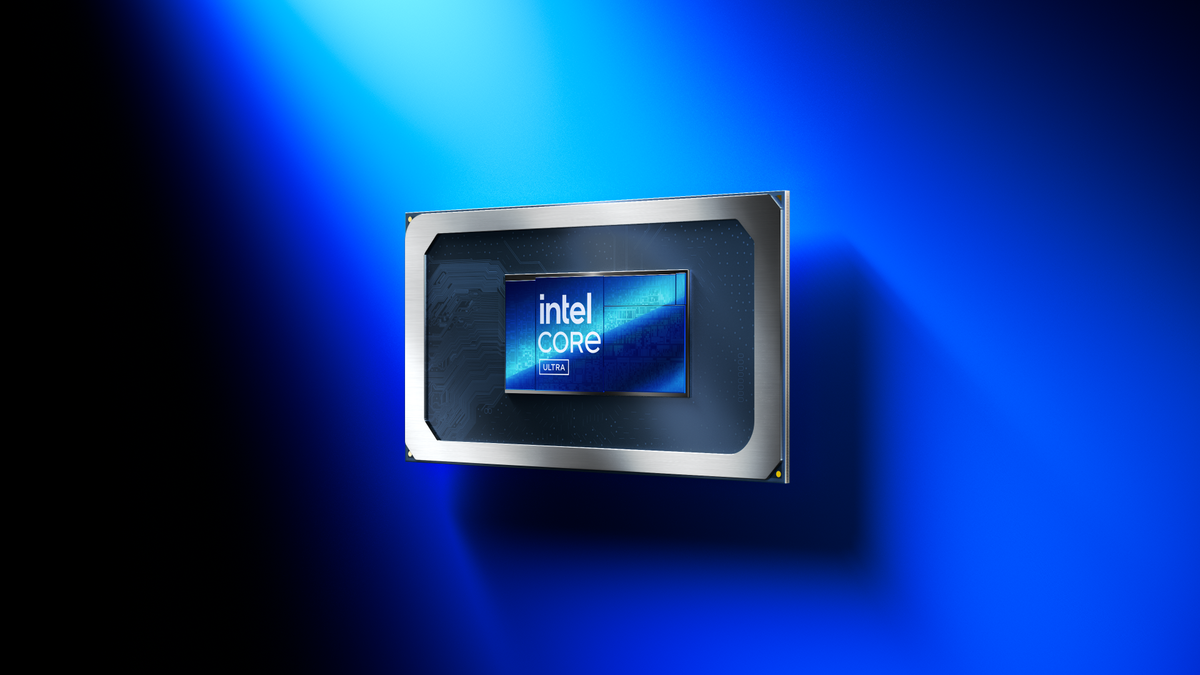On Monday, Intel published a list of its mainstream Core Ultra 200S processors for desktop PCs. The family of non-K Core Ultra 200S “Arrow Lake-S” CPUs with 65W and 35W processor base power includes 11 models, which will join six Core Ultra 200K processors that have already been available for a quarter.
The range of Intel’s Core Ultra 200S processors for mainstream and low-power PCs includes CPUs with 10 (6P+4E) 14 (6P + 8E), 20 (8P + 12E), and 24 (8P + 16E) cores, depending on positioning. All the CPUs support up to 192 GB of DDR5-6400 memory and feature 24 PCIe lanes, including 16 PCIe 5.0 lanes for graphics cards, four PCI 5.0 lanes for an SSD, and four more PCIe 4.0 lanes for another drive. Interestingly, Intel does not mention support for CUDIMMs.
Nine out of 11 Core Ultra 200S processors for mainstream and low-power desktops feature integrated graphics with four (512 stream processors), three (384 SPs), or two (256 SPs) Xe cores based on the Xe2 LPG microarchitecture. Traditionally, F-series processors do not feature an iGPU, so these CPUs require a discrete graphics card.
| Core Ultra 9 285 | Core Ultra 9 285T | Core Ultra 7 265 | Core Ultra 7 265F | Core Ultra 7 265T | Core Ultra 5 245 | Core Ultra 5 245T | Core Ultra 5 235 | Core Ultra 5 235T | Core Ultra 5 225 | Core Ultra 5 225F | |
| Total Cores | 24 | 24 | 20 | 20 | 20 | 14 | 14 | 14 | 14 | 10 | 10 |
| Performance Cores | 8 | 8 | 8 | 8 | 8 | 6 | 6 | 6 | 6 | 6 | 6 |
| Efficient Ccores | 16 | 16 | 12 | 12 | 12 | 8 | 8 | 8 | 8 | 4 | 4 |
| Total Threads | 24 | 24 | 20 | 20 | 20 | 14 | 14 | 14 | 14 | 10 | 10 |
| Max Turbo Frequency | 5.6 GHz | 5.4 GHz | 5.3 GHz | 5.3 GHz | 5.3 GHz | 5.1 GHz | 5.1 GHz | 5 GHz | 5 GHz | 4.9 GHz | 4.9 GHz |
| Turbo Boost Max Technology 3.0 Frequency | 5.5 GHz | 5.4 GHz | 5.3 GHz | 5.3 GHz | 5.3 GHz | Row 6 – Cell 6 | Row 6 – Cell 7 | Row 6 – Cell 8 | Row 6 – Cell 9 | Row 6 – Cell 10 | |
| Performance-core Max Turbo Frequency | 5.4 GHz | 5.3 GHz | 5.2 GHz | 5.2 GHz | 5.2 GHz | 5.1 GHz | 5.1 GHz | 5 GHz | 5 GHz | 4.9 GHz | 4.9 GHz |
| Efficient-core Max Turbo Frequency | 4.6 GHz | 4.6 GHz | 4.6 GHz | 4.6 GHz | 4.6 GHz | 4.5 GHz | 4.5 GHz | 4.4 GHz | 4.4 GHz | 4.4 GHz | 4.4 GHz |
| Performance-core Base Frequency | 2.5 GHz | 1.4 GHz | 2.4 GHz | 2.4 GHz | 1.5 GHz | 3.5 GHz | 2.2 GHz | 3.4 GHz | 2.2 GHz | 3.3 GHz | 3.3 GHz |
| Efficient-core Base Frequency | 1.9 GHz | 1.2 GHz | 1.8 GHz | 1.8 GHz | 1.2 GHz | 3 GHz | 1.7 GHz | 2.9 GHz | 1.6 GHz | 2.7 GHz | 2.7 GHz |
| Peak TOPS | 36 | 35 | 33 | 25 | 33 | 29 | 29 | 27 | 27 | 23 | 19 |
| Cache | 36 MB Smart Cache | 36 MB Smart Cache | 30 MB Smart Cache | 30 MB Smart Cache | 30 MB Smart Cache | 24 MB Smart Cache | 24 MB Smart Cache | 24 MB Smart Cache | 24 MB Smart Cache | 20 MB Smart Cache | 20 MB Smart Cache |
| Total L2 Cache | 40 MB | 40 MB | 36 MB | 36 MB | 36 MB | 26 MB | 26 MB | 26 MB | 26 MB | 22 MB | 22 MB |
| Base Power | 65 W | 35 W | 65 W | 65 W | 35 W | 65 W | 35 W | 65 W | 35 W | 65 W | 65 W |
| Maximum Turbo Power | 182 W | 112 W | 182 W | 182 W | 112 W | 121 W | 114 W | 121 W | 114 W | 121 W | 121 W |
| Deep Learning Boost (DL Boost) on CPU | Yes | Yes | Yes | Yes | Yes | Yes | Yes | Yes | Yes | Yes | Yes |
| Max Memory | 192 GB | 192 GB | 192 GB | 192 GB | 192 GB | 192 GB | 192 GB | 192 GB | 192 GB | 192 GB | 192 GB |
| Memory Types | Up to DDR5 6400 MT/s | Up to DDR5 6400 MT/s | Up to DDR5 6400 MT/s | Up to DDR5 6400 MT/s | Up to DDR5 6400 MT/s | Up to DDR5 6400 MT/s | Up to DDR5 6400 MT/s | Up to DDR5 6400 MT/s | Up to DDR5 6400 MT/s | Up to DDR5 6400 MT/s | Up to DDR5 6400 MT/s |
| GPU Base Frequency | 300 MHz | 300 MHz | 300 MHz | – | 300 MHz | 300 MHz | 300 MHz | 300 MHz | 300 MHz | 300 MHz | – |
| GPU Max Dynamic Frequency | 2 GHz | 2 GHz | 1.95 GHz | – | 1.95 GHz | 1.9 GHz | 1.9 GHz | 2 GHz | 2 GHz | 1.8 GHz | – |
| GPU Peak TOPS (Int8) | 8 | 8 | 8 | – | 8 | 8 | 8 | 6 | 6 | 4 | – |
| Xe-cores | 4 | 4 | 4 | – | 4 | 4 | 4 | 3 | 3 | 2 | – |
| PCI Express Configurations ‡ | Up to 1×16+2×4 | 2×8+2×4 | 1×8+4×4 | Up to 1×16+2×4 | 2×8+2×4 | 1×8+4×4 | Up to 1×16+2×4 | 2×8+2×4 | 1×8+4×4 | Up to 1×16+2×4 | 2×8+2×4 | 1×8+4×4 | Up to 1×16+2×4 | 2×8+2×4 | 1×8+4×4 | Up to 1×16+2×4 | 2×8+2×4 | 1×8+4×4 | Up to 1×16+2×4 | 2×8+2×4 | 1×8+4×4 | Up to 1×16+2×4 | 2×8+2×4 | 1×8+4×4 | Up to 1×16+2×4 | 2×8+2×4 | 1×8+4×4 | Up to 1×16+2×4 | 2×8+2×4 | 1×8+4×4 | Up to 1×16+2×4 | 2×8+2×4 | 1×8+4×4 |
| Max # of PCI Express Lanes | 24 | 24 | 24 | 24 | 24 | 24 | 24 | 24 | 24 | 24 | 24 |
The AI performance of Intel’s Arrow Lake-S processors with locked multipliers varies from model to model and spans from 19 to 36 TOPS. This is below Microsoft‘s requirements for Copilot+ PCs, and therefore, desktops based on the new CPUs will not support the latest features supported by Windows 11.
However, one advantage of Intel’s Core Ultra 200S platforms for mainstream and low-power PCs is their support for up to two Thunderbolt 4 ports, as well as DisplayPort 2.1 and HDMI 2.1 display outputs.
All of Intel’s Arrow Lake-S CPUs are made by TSMC using N3B (compute tile), N5P (graphics tile), and N6 (SoC tile, I/O tile) process technologies and then assembled and packaged by Intel using its Foveros 3D technology.
Intel’s Core Ultra 200S-series desktop processors with 65W and 35W PBP will go on sale starting January 13, 2025. The Core Ultra 200S family will also include codenamed Bartlett Lake-S CPUs, but Intel has yet to disclose their specifications.









